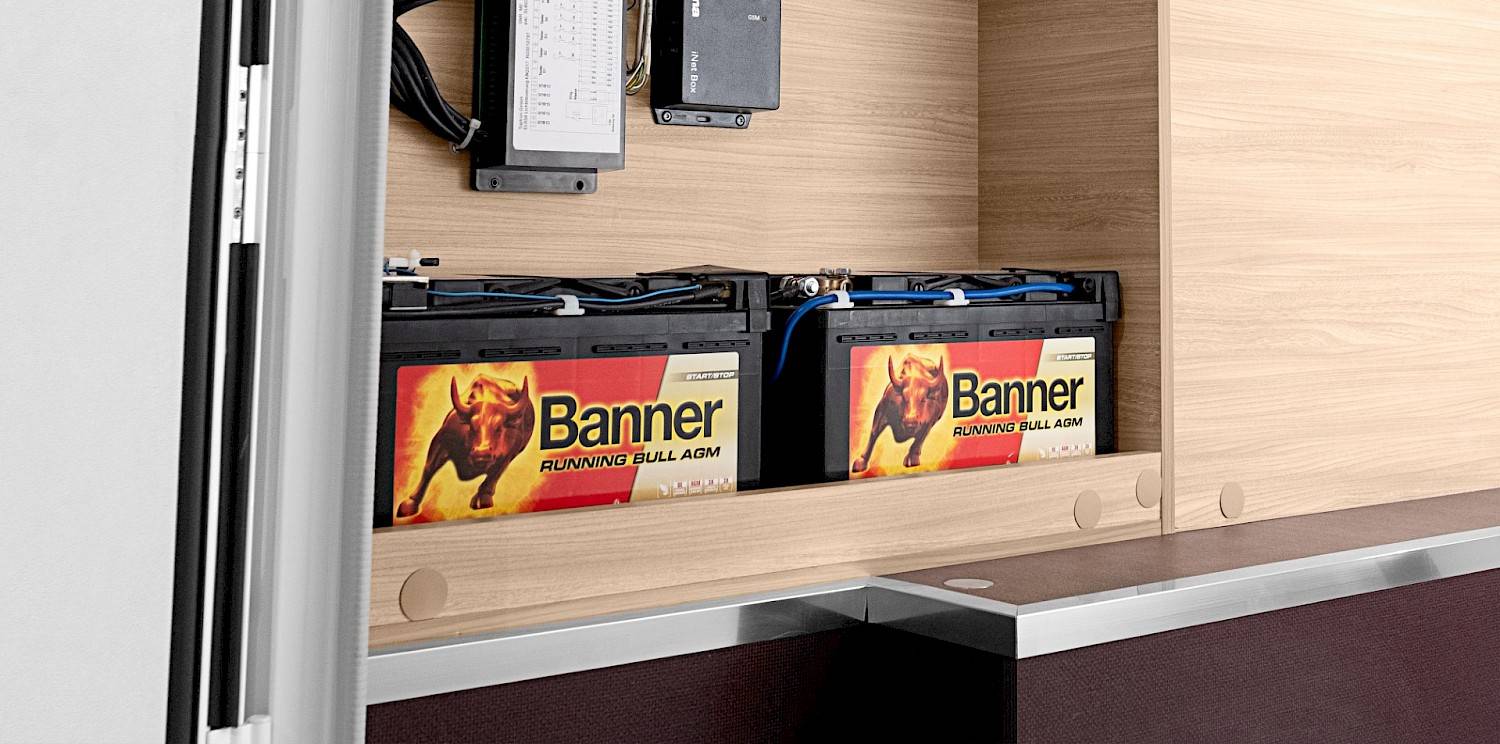
How do you maintain the batteries of your motorhome?
Every motorhome is equipped with at least two batteries: a starter battery and a residential battery. A healthy starter battery is crucial for a good holiday, but the residential battery in particular is the heart of your camper. A healthy and well-functioning residential battery guarantees an unforgettable holiday without worries. Both batteries are connected separately and have different characteristics and properties. Read here how to properly maintain the batteries and thus extend their lifespan.
The electrical installation of your motorhome
Your motorhome is equipped with two different types of batteries, separately connected and each with their own characteristics and properties:
1. The starter battery: ensures that the engine of your camper starts when you turn the ignition key, so that you can drive your motorhome. Your starter battery must therefore supply a large current surge for a very short moment (to start the engine).
2. The residential battery(s): provides power when you "live" in the camper. In the living space of your motorhome you need a little power for many hours. After all, without a residential battery you have no lighting, but also no heating or a refrigerator (since the ignition of these appliances runs on the residential battery) or running water (water pump works on 12v). A healthy and well-functioning residential battery guarantees an unforgettable holiday without worries.
The batteries of your camper are the only parts that require permanent attention and care. A battery is a sensitive and vulnerable part that is damaged very quickly. So read on and discover how you can enjoy your camper for years to come without any worries.

Battery maintenance
The best tip we can give: use your motorhome as much as possible. A camper is not made to stand still. Problems with batteries mainly arise when the camper is NOT used. Every day a battery loses some voltage: the natural discharge. When your motorhome is not used for a longer period of time, the voltage drops below a critical level. Do you want to store it for a few weeks/months? Don't forget to fully charge the batteries AND recharge them regularly.
1. Starting battery: The starting battery is charged by the alternator when you drive. So first and foremost, make sure that your starter battery is perfectly charged before storing your camper. To prevent the natural discharge of this battery, you can use a trickle charger that you connect to your starter battery or into the 12V plug of the cabin. You can also drive 30 km every 2 weeks. If this is not possible, you can also let the camper idle for 15 minutes, making sure that all power consumers are switched off (headlights, windshield wipers, heating, etc.).
2. Residential battery: the residential batteries are charged by connecting the camper to the grid. Here too, the basic rule is that you store the camper with fully charged batteries. When you return from a weekend away, do not forget to first connect the camper to the grid for 24 hours until the built-in battery charger has fully charged the battery. Once parked, you only have to compensate for the natural power loss of the battery. This is best done by regularly connecting your camper to the grid: 2 hours daily or 48 hours every two weeks. Leaving the camper on the grid all the time is not a solution as it could overcharge the batteries or damage the charger or electrical circuit.
TIP: work with a timer: then you can leave the camper connected to mains power without worrying, because the timer ensures that the charger charges for an hour or two per day.
A solar panel can also be the ideal solution. This is continuously and directly connected to the residential battery(s) and provides a continuous "maintenance charge" from sunrise to sunset. Of course this is under the condition that there is sufficient light in the location where you leave your motorhome.
How do you recognize a damaged battery?
A damaged battery will give a normal impression when charging and will charge to its full capacity, but when using this battery the voltage will drop very quickly and the battery will be discharged in no time.

What if the battery is completely discharged?
If the battery remains below this critical level for several days, it will begin to sulfate, causing irreparable damage to the battery. Try to recharge it using a trickle charger. If that doesn't work, you will have to replace the battery.
Battery warranty?
A battery with a construction defect is exceptionally rare (1 in 10,000 batteries). If a battery has a construction defect, you will notice this after the first few days of use. There is a good chance that we will already discover this defect and have already resolved the problem before delivery. Problems with the battery after a few months are always the result of sulfation (= poor maintenance) and are not covered by the warranty conditions of our manufacturers.
Customized advice? Call or email our after-sales service.
The condition of the batteries is checked during the annual maintenance in Vanomobil.



